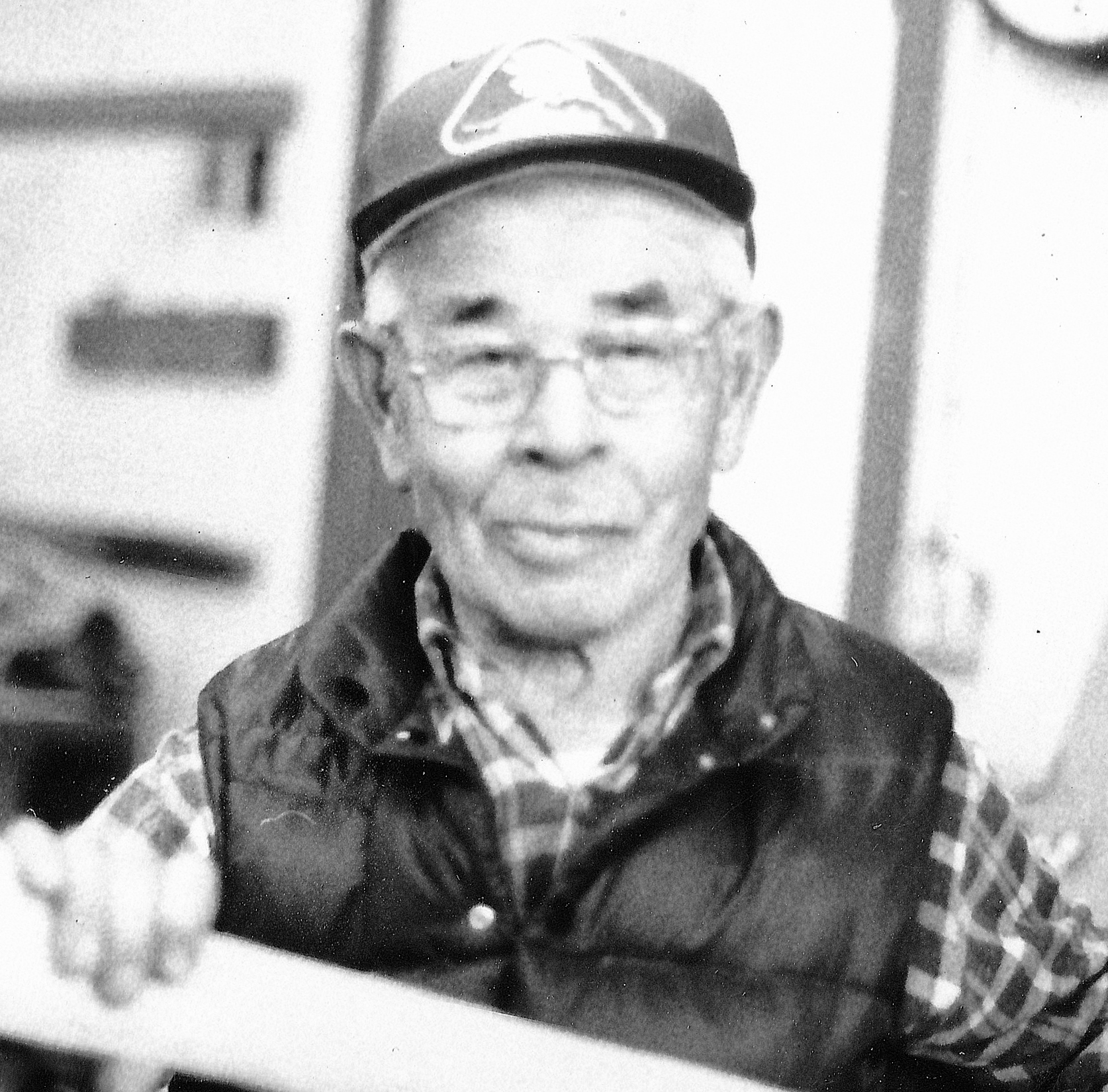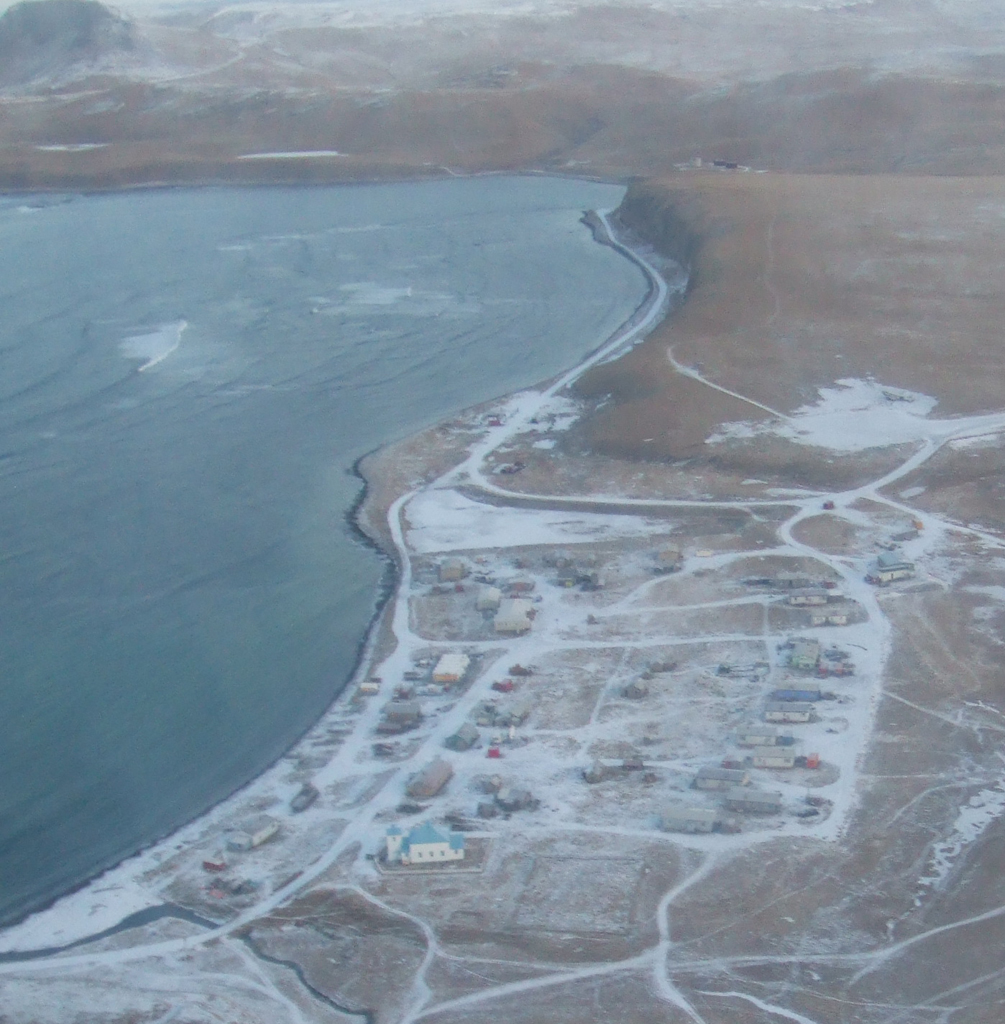|
Sergie Sovoroff
Sergie Sovoroff (September 17, 1901 – September 27, 1989) was an Aleut educational leader. He was born on Umnak Island in the Aleut village of Nikolski in 1902. Sovoroff was born only nine years before the United States government outlawed sea otter hunting. After 1911, the need and use of ''iqya-x'', Aleut sea kayaks, declined abruptly. But Sovoroff continued to see a need for creating model sea kayaks, known in his days by the Russian name "baidarka". Sovoroff "...kept up the tradition of making kayak models". Model sea kayaks built by Sovoroff, quite often with three hatches with a Russian Orthodox priest seated in the middle hatch, can be seen in many museums around the world. These model sea kayaks, finely crafted by Sovoroff, often equipped with a rudder on the stern of the kayak, all too frequently bear the name of the person who purchased them or donated them to the museum, and not Sovoroff's. Sergie died on September 27, 1989 and is buried in Nikolski, Alaska. ... [...More Info...] [...Related Items...] OR: [Wikipedia] [Google] [Baidu] |
Aleut People
The Aleuts ( ; russian: Алеуты, Aleuty) are the indigenous people of the Aleutian Islands, which are located between the North Pacific Ocean and the Bering Sea. Both the Aleut people and the islands are politically divided between the US state of Alaska and the Russian administrative division of Kamchatka Krai. Etymology In the Aleut language they are known by the endonyms Unangan (eastern dialect) and Unangas (western dialect), both of which mean "people". The Russian term "Aleut" was a general term used for both the native population of the Aleutian Islands and their neighbors to the east in the Kodiak Archipelago, who were also referred to as "Pacific Eskimos". Language Aleut people speak Unangam Tunuu, the Aleut language, as well as English and Russian in the United States and Russia respectively. An estimated 150 people in the United States and five people in Russia speak Aleut. [...More Info...] [...Related Items...] OR: [Wikipedia] [Google] [Baidu] |
Umnak Island
Umnak ( ale, Unmax, Umnax; russian: Умнак) is one of the Fox Islands of the Aleutian Islands. With of land area, it is the third largest island in the Aleutian archipelago and the 19th largest island in the United States. The island is home to a large volcanic caldera on Mount Okmok and the only field of geysers in Alaska. It is separated from Unalaska Island by Umnak Pass. In 2000, Umnak was permanently inhabited by only 39 people and by 2010, around 18, placing the settlement of Nikolski in difficulty and its school was closed. History The earliest known settlement on Umnak Island is at Anangula and is 8,400 years old. Anangula was later abandoned and the Sandy Beach site became occupied, along with Idaliuk and Chaluka. Most of the early settlements on Umnak were located along the streams. A major geologic event was the cutting of strand flats during the Hypsithermal period, about 8250 to 3000 years ago, which led to a greater natural food supply on the island for th ... [...More Info...] [...Related Items...] OR: [Wikipedia] [Google] [Baidu] |
Nikolski, Alaska
Nikolski (''Chalukax̂'' in Aleut; russian: Никольский) is a census-designated place (CDP) on Umnak Island in Aleutians West Census Area, Alaska, United States. The population was 39 at the 2020 census, up from 18 in 2010. Nikolski is on Nikolski Bay, off the southwest end of the island. It is 116 air miles west of Unalaska, and 900 air miles from Anchorage. Residents are known as Unangan, and Aleut is spoken in most of the remaining homes. History The Aleutian Pribilof Islands Association reports that Nikolski is thought to be one of the oldest continuously-occupied communities in the world. Archaeological evidence from Ananiuliak Island, 5 km offshore in Nikolski Bay, dates human habitation to 8,500 years ago. A site known as Chaluka in Nikolski shows 4,000 years of virtually continuous occupation. Subsistence activities, sheep and cattle raising, and fishing are the main livelihoods and the latter has been traced back thousands of years by archaeologists, thr ... [...More Info...] [...Related Items...] OR: [Wikipedia] [Google] [Baidu] |
Sea Otter
The sea otter (''Enhydra lutris'') is a marine mammal native to the coasts of the northern and eastern North Pacific Ocean. Adult sea otters typically weigh between , making them the heaviest members of the weasel family, but among the smallest marine mammals. Unlike most marine mammals, the sea otter's primary form of insulation is an exceptionally thick coat of fur, the densest in the animal kingdom. Although it can walk on land, the sea otter is capable of living exclusively in the ocean. The sea otter inhabits nearshore environments, where it dives to the sea floor to forage. It preys mostly on marine invertebrates such as sea urchins, various mollusks and crustaceans, and some species of fish. Its foraging and eating habits are noteworthy in several respects. Its use of rocks to dislodge prey and to open shells makes it one of the few mammal species to use tools. In most of its range, it is a keystone species, controlling sea urchin populations which would otherwis ... [...More Info...] [...Related Items...] OR: [Wikipedia] [Google] [Baidu] |
Kayak
A kayak is a small, narrow watercraft which is typically propelled by means of a double-bladed paddle. The word kayak originates from the Greenlandic word '' qajaq'' (). The traditional kayak has a covered deck and one or more cockpits, each seating one paddler. The cockpit is sometimes covered by a spray deck that prevents the entry of water from waves or spray, differentiating the craft from a canoe. The spray deck makes it possible for suitably skilled kayakers to roll the kayak: that is, to capsize and right it without it filling with water or ejecting the paddler. ] Some modern boats vary considerably from a traditional design but still claim the title "kayak", for instance in eliminating the cockpit by seating the paddler on top of the boat ("sit-on-top" kayaks); having inflated air chambers surrounding the boat; replacing the single hull with twin hulls; and replacing paddles with other human-powered propulsion methods, such as foot-powered rotational propellers and ... [...More Info...] [...Related Items...] OR: [Wikipedia] [Google] [Baidu] |
Sea Kayak
A sea kayak or touring kayak is a kayak developed for the sport of paddling on open waters of lakes, bays, and the ocean. Sea kayaks are seaworthy small boats with a covered deck and the ability to incorporate a spray deck. They trade off the manoeuvrability of whitewater kayaks for higher cruising speed, cargo capacity, ease of straight-line paddling, and comfort for long journeys. Sea kayaks are used around the world for marine (sea) journeys from a few hours to many weeks, as they can accommodate one to three paddlers together with room for camping gear, food, water, and other supplies. A sea kayak usually ranges anywhere from for solo craft, and up to for tandem craft. Beam width may be as little as , and may be up to . The term "sea kayak" is said to have originated with the publication in 1981 of a book of that name by John Dowd, who said ''"It wasn't called sea kayaking until my book came out, ... It was called kayak touring or sea canoeing or canoe touring, blue-water p ... [...More Info...] [...Related Items...] OR: [Wikipedia] [Google] [Baidu] |
Iqyax By Sergie Sovoroff
The baidarka or Aleutian kayak (Aleut: iqyax) is a watercraft consisting of soft skin (artificial or natural) over a rigid space frame. Its initial design was created by the native Aleut (or Unangan) people of the Aleutian Islands. The Aleut people were surrounded by treacherous waters and required water transportation and a hunting vessel. Due to the geography and climate of the Aleutian Islands, trees and wood were in scarce supply and the people relied primarily on driftwood to create the framework of the kayak, which was covered with the skins of sea mammals. Two types of boats were created, one with a covered deck that was used as a hunting kayak, and another that was open and capable of carrying goods and people from one island to another. Modern baidarkas are fast collapsible rowing boats, based on aluminum alloy frame with skin made of PVC fabric. Often the inflatable buoyancy chambers are embedded into the skin, resulting in increased safety and performance. Some des ... [...More Info...] [...Related Items...] OR: [Wikipedia] [Google] [Baidu] |
Inuit Languages
The Inuit languages are a closely related group of indigenous American languages traditionally spoken across the North American Arctic and adjacent subarctic, reaching farthest south in Labrador. The related Yupik languages (spoken in western and southern Alaska, as well as in nearby Russia's farthest east, though severely endangered there) are the two main branches of Eskaleut, a primary language family. The Inuit live primarily in three countries: Greenland (Kingdom of Denmark), Canada (specifically in Nunavut, Northwest Territories, the Nunavik region of Quebec, and the Nunatsiavut and Nunatuĸavut regions of Labrador), and the United States (specifically the coast of Alaska). The total population of Inuit speaking their traditional languages is difficult to assess with precision, since most counts rely on self-reported census data that may not accurately reflect usage or competence. Greenland census estimates place the number of speakers of varieties of Inuit languag ... [...More Info...] [...Related Items...] OR: [Wikipedia] [Google] [Baidu] |
1901 Births
Nineteen or 19 may refer to: * 19 (number), the natural number following 18 and preceding 20 * one of the years 19 BC, AD 19, 1919, 2019 Films * ''19'' (film), a 2001 Japanese film * ''Nineteen'' (film), a 1987 science fiction film Music * 19 (band), a Japanese pop music duo Albums * ''19'' (Adele album), 2008 * ''19'', a 2003 album by Alsou * ''19'', a 2006 album by Evan Yo * ''19'', a 2018 album by MHD * ''19'', one half of the double album '' 63/19'' by Kool A.D. * ''Number Nineteen'', a 1971 album by American jazz pianist Mal Waldron * ''XIX'' (EP), a 2019 EP by 1the9 Songs * "19" (song), a 1985 song by British musician Paul Hardcastle. * "Nineteen", a song by Bad4Good from the 1992 album '' Refugee'' * "Nineteen", a song by Karma to Burn from the 2001 album ''Almost Heathen''. * "Nineteen" (song), a 2007 song by American singer Billy Ray Cyrus. * "Nineteen", a song by Tegan and Sara from the 2007 album '' The Con''. * "XIX" (song), a 2014 song by Slipkno ... [...More Info...] [...Related Items...] OR: [Wikipedia] [Google] [Baidu] |
1989 Deaths
File:1989 Events Collage.png, From left, clockwise: The Cypress Street Viaduct, Cypress structure collapses as a result of the 1989 Loma Prieta earthquake, killing motorists below; The proposal document for the World Wide Web is submitted; The Exxon Valdez oil tanker runs aground in Prince William Sound, Alaska, causing a large Exxon Valdez oil spill, oil spill; The Fall of the Berlin Wall begins the downfall of Communism in Eastern Europe, and heralds German reunification; The United States United States invasion of Panama, invades Panama to depose Manuel Noriega; The Singing Revolution led to the independence of the Baltic states of Estonia, Latvia, and Lithuania from the Soviet Union; The stands of Hillsborough Stadium in Sheffield, Yorkshire, where the Hillsborough disaster occurred; 1989 Tiananmen Square protests and massacre, Students demonstrate in Tiananmen Square, Beijing; many are killed by forces of the Chinese Communist Party., 300x300px, thumb rect 0 0 200 200 1989 Loma ... [...More Info...] [...Related Items...] OR: [Wikipedia] [Google] [Baidu] |






